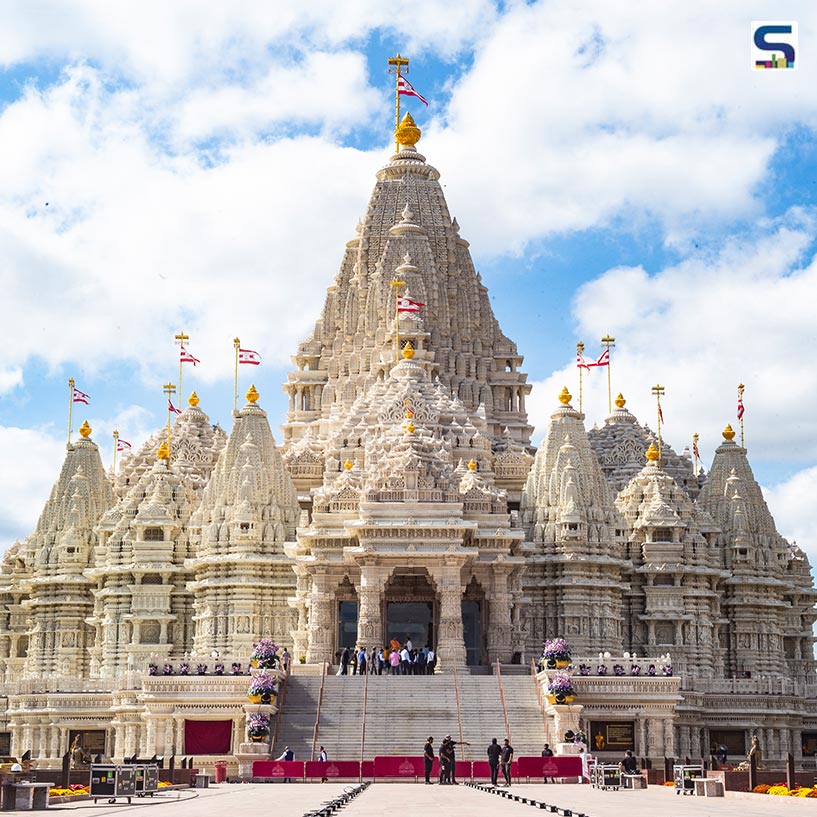
In Robbinsville, New Jersey, a significant event unfolded with the construction of the BAPS temple, now the largest Hindu temple in the United States, situated on expansive former soy farmland. Beyond serving the Swaminarayan community, it aims to be a unique destination for global visitors. Standing at an impressive 191 feet with 10,000 statues, the Swaminarayan Akshardham graces the landscape, yet a prolonged issue arises regarding the fairness of labor practices during construction. SURFACES REPORTER (SR)’s in-depth exploration of the temple's construction reveals further insights:

The temple is bathed in the glow of the setting sun following the opening ceremony in Robbinsville, New Jersey. Photo credit- Getty Images/Mihai Andritoiu.
Amazing Stone Building
They used a lot of stones from different countries, like Bulgaria, China, Greece, India, Italy, and Turkey. The design of the temple is inspired by old Indian books about architecture.
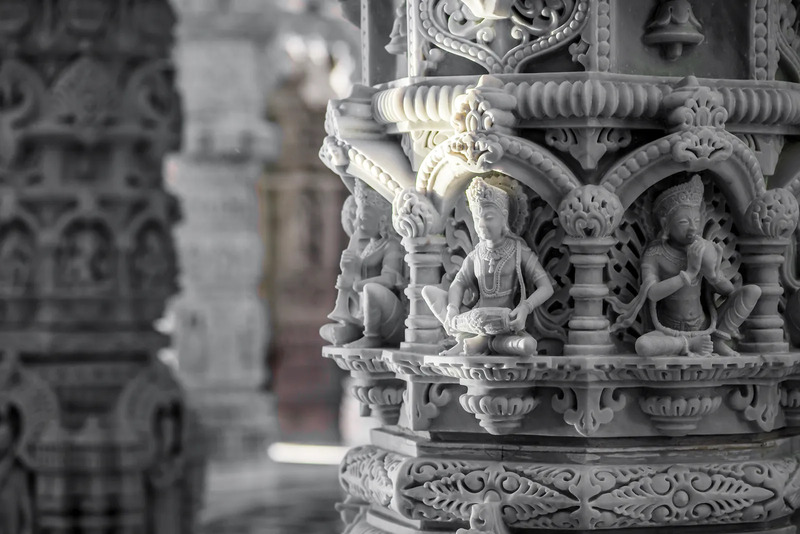
Granite, limestone, marble, sandstone, and various minerals were obtained from countries such as Bulgaria, China, Greece, India, Italy, and Turkey. Photo courtesy of BAPS Swaminarayan Sanstha.
The temple has many parts, like the main shrine, sub-shrines, a plaza, a bronze statue, a welcome center, a vegetarian café, a stepwell, courtyards, fountains, and gardens.
Using Solar Power
The temple is also good for the environment. They have a big field of solar panels that make a lot of power every day—enough to run the temple! The floors inside the temple are heated, which keeps it warm in the winter. This temple cost around $96 million to build.
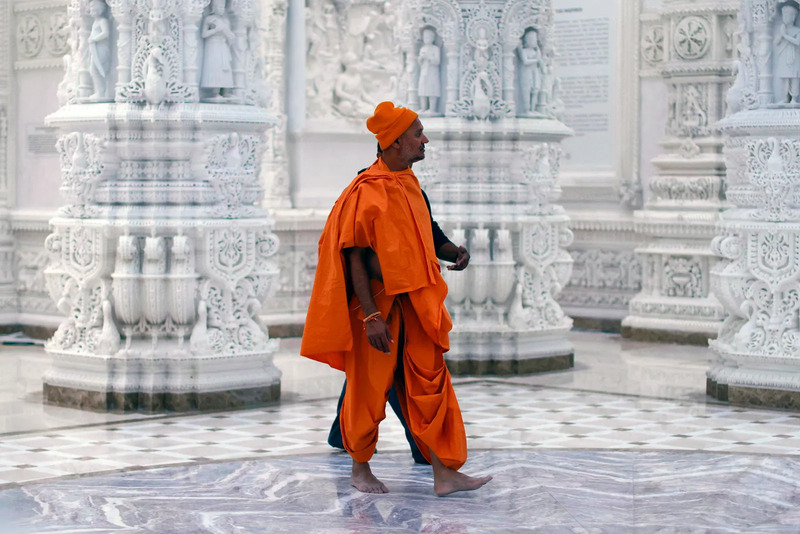
A man walks inside the temple before the opening ceremony of the BAPS Shri Swaminarayan Mandir temple. Photo- Getty Images
Quotes and Symbols on Walls
The temple wants everyone to feel welcome, no matter what they believe. They put quotes from different thinkers and leaders on the walls, like Socrates, Martin Luther King Jr., President Abraham Lincoln, and Albert Einstein. This shows that the temple is open to people from many different religions.
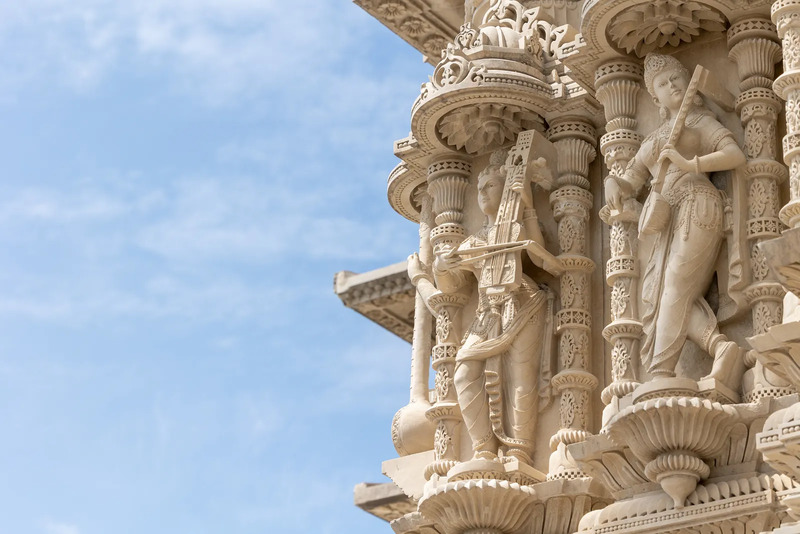 A close examination of the detailed decorative elements adorning the outside of the temple. Photo courtesy of BAPS Swaminarayan Sanstha.
A close examination of the detailed decorative elements adorning the outside of the temple. Photo courtesy of BAPS Swaminarayan Sanstha.
The construction of the building has encountered legal challenges. Allegations suggest that the builders brought workers from India to the United States, subjecting them to strenuous work for minimal pay.
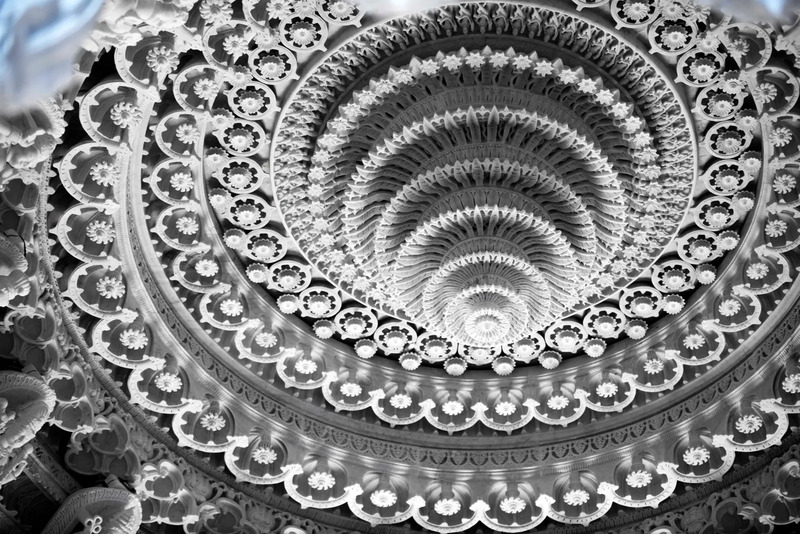
The interiors possess a vibrant stillness, as though natural forms are frozen in time. Photo courtesy of BAPS Swaminarayan Sanstha.
This led to significant legal issues, prompting the government to temporarily halt construction on the temple. While the builders argue that it aligns with their religious culture, discontent among many people persists.
Keep reading SURFACES REPORTER for more such articles and stories.
You may also like to read about:
Majestic New Hindu Temple In Dubai: An Ideal Blend of Indian And Arabic Architecture
The Worlds First 3D Printed Temple in Telangana | SR News Update
Temple of Vedic Planetarium (TOVP): Architectural Details of The World’s Largest ISKCON Temple In Mayapur | West Bengal
and more...